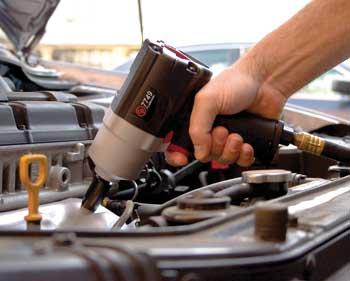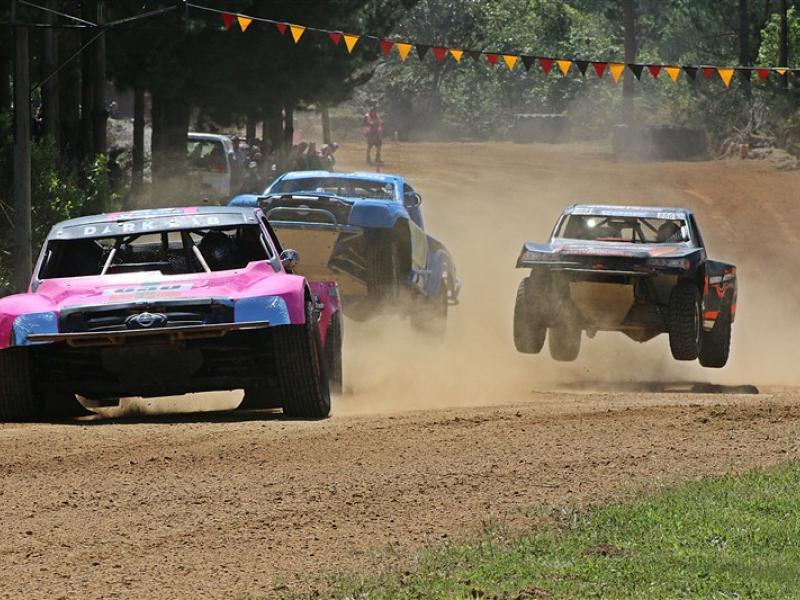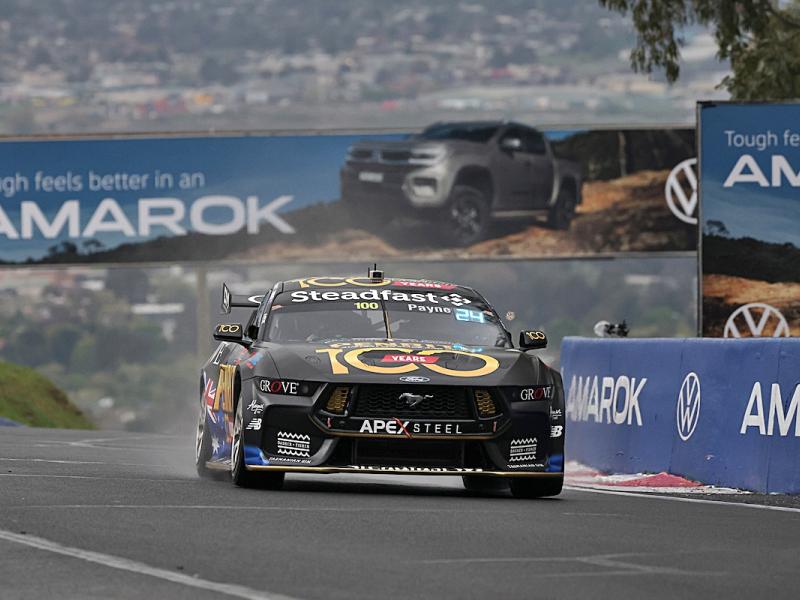| New developments in hand, air, and power tools often happen in small increments. But over time the nett effect has made the automotive technician’s work much easier and faster. Jenny Pretorius reports. Tool makers have also long used simple physics principles to design tools that add strength to a technician’s hands. Good examples are the hand impact driver, flogging spanner, and socket and power bar combination. Developments such as electricity, compressed air, and more recently lithium ion batteries have vastly improved the available range of tools and their application values. US based Chicago Pneumatic developed the world’s first impact wrench, a motorised version of the flogging spanner, in the 1940s. Managing director of Air Tool Solutions in Christchurch, Mike Drummond, says an impact wrench is arguably the hardest working air tool in an automotive technician’s toolbox. The company recently added the new Kawasaki KPT-14HT ½ composite impact wrenches, factory rated at 680Nm, to its product range. “Its performance figures exceeded our expectations. In our initial testing and evaluation process the KPT14HT’s figures were very impressive compared with torque data collected from the many impact tools we’ve run on our torque tester,” he says. Drummond explains improvements in the tool’s design technology. It features a new double loop spring clutch mechanism sealed in an oil bath, as well as refined porting and motor design. “These technological advances set it well apart from earlier models and have resulted in an extremely powerful and durable ½ impact wrench. “The improvements will come as a huge advantage to automotive technicians who are finding it increasingly hard to remove tight crankshaft pulley bolts and similar hardware from modern car and four wheel drive engines with their older lower specification impact tools,” he says. He says feedback from 14HT owners is positive. Alastair Naylor from Just Toymota Ltd in Christchurch has been using the new KPT-14HT since September 2009. Naylor told Drummond: “The best way I could describe this gun is awesome. We’ve gone from having to hold the trigger on our old impact wrench for several seconds and in some cases not being able to undo the bolt at all, now one touch of the trigger on the Kawasaki 14HT and the bolt is loose, saving us time and money.” An Auckland based workshop owner agrees using a motorised impact wrench is a different kettle of fish from the flogging spanner and socket and bar combo he used for similar work as a student in the 1970s. “You can do the same job considerably faster, saving not minutes, but hours, and often easier...a good argument for taking new technological developments on board.” Drummond agrees: “In my opinion choosing quality products that perform is critical in a commercial application. They may cost a little more initially but with the benefit of increased productivity and reliability the savings in the long run far outweigh the relatively small difference in purchase price. It’s not just about how much or how little you spend but how wisely you spend it.” He adds it is important the tool vendor work with tool users to ensure air supply to the tool is correctly matched to get the maximum performance. Air Tool Solutions stocks a range of high performance air couplings and hoses that can flow nearly thrice the air of standard types. The company also runs a fully equipped specialist air tool workshop that services most brands of tools. Cordless is great Staying up to date with new technology may not be the only requirement for a successful automotive workshop business, but it is an important one. Wellington-based Powerpac Group says as engine technology and designs and auto shapes change, tool designers develop tools in turn to meet the challenges brought about by these changes. Powerpac Group says the modern automobile is a sophisticated piece of machinery that requires sophisticated diagnostic and repair equipment. Vehicle service departments are under constant pressure to keep their equipment up to date. Vehicle manufacturers servicing requirements change - many parts are no longer repaired, but rather unbolted and removed to have a new one fitted. This means undoing a fastening – sometimes a single use one. Not only bolting and fastening requirements have changed dramatically in the last few years, but also, for example, surface preparation and car finishing techniques. All these throw challenges at the tool designers to offer solutions to take advantage of these advances. Cordless power tools entered the market decades ago, but the issues of an effective and reliable power supply, quick charging times, and longer lasting batteries have seen major advances yet remain a work in progress. Since power tool manufacturers cut the cord back in the 1980s batteries have become smaller and more robust. Powerpac supplier partner Chicago Pneumatic (CP) developed the world’s first impact wrench in the 1940s, and in 2009 launched a cordless impact wrench into the market. Powerpac says the unit is ruggedly built and equipped with the latest lithium ion battery technology, which considerably extends the tool’s working cycle. Additional rubber protective covers protect the battery and increase its life. The battery has a power level indicator and a positive slide bar battery to tool connecting system to ensure positive connection to the motor. |
All tools are supplied with two batteries. The cordless impact wrench will typically perform a full day’s work in a tyre forecourt, but in the event of the battery running down during a work cycle, the impact wrench can be placed on its charge unit to receive 75% of it’s recharge in 15 minutes.
|






